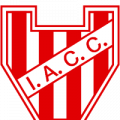Changes are constantly being made in the MotoGP to ensure fairness and safety amongst other things. The Grand Prix Commission met recently in Madrid and as a result of the meeting at the beginning of December with the officials, some changes are to be brought into effect with the start of the 2017 season.
Present at the meeting were Messrs. Made up of Dorna Chairman Carmelo Ezpeleta, FIM CEO Ignacia Verneda , Herve Ponchoral representing IRTA and Takana Tsubouchi (MSMA). Alongside them was Carlos Ezpeleta (Dorna), IRTA CEO and Secretary of the meeting Mike Trimby, FIM representative Paul Duparc, Race Director Mike Webb, Technical Director Danny Aldridge, and Director of Technology Corrado Cecchinelli.
Technical Regulations to be made effective for the 20117 season
Some Technical Regulations are set to be made effective from the start of the 2017 season. In the Moto2 and Moto3 classes, the top six riders are required to carry on-board cameras, as a result, the extra weight is thought to cause a disadvantage for those carrying them, especially as the machinery is so closely matched. As a result, the other machines will be required to carry dummy version or weights in the same positions.
When it comes to the minimum weight requirement, the machine/rider weight in the Moto3 will not change however in the Moto2 class there will be a slight increase in the minimum weight by two kilos increasing the measurement to 217 kilos.
Intermediate tyres to be banished
After consulting with the Safety Commission and after receiving approval French tyre manufacturer Michelin who supply the MotoGP class, the allocations have been changed ahead of the 2017 season. Intermediate tyres will no longer be of availability to the MotoGP class, and although the maximum number of wet and dry track tyres stays the same, there will be an additional specification of both slick tyres for the front and the rear for the riders to choose from.
Sporting Regulations changes
Changes to Sporting Regulations will also fall in place ahead of next season, When it comes to Moto2 and Moto3 testing, exclusively for the contracted riders, teams are able to test at any circuit for up to 10 days maximum during the season; as well as that they will also participate in official tests and tests in November after the last event.
With the Race Start Procedure, after the warm up lap, any rider who gets to the grid behind the safety car will now have to enter the pit lane where they will have to start the race from. As a result of certain riders breaking pit lane speed limits on several occasions, it was thought that the current fine of 150 Euro was not sufficient enough and so in the future, a first offence will cost the rider 200 Euro, but any reoccurring offences will be penalised with larger fines or other penalties which will be determined by the FIM MotoGP Stewards.
When a race is to be restarted, with less than three laps having been completed, all riders are permitted to in in the restart; this is despite the fact they may not have completed the sighting or warm up lap for the original start.
When it comes to Officials and Track Safety, at all events the Clerk of the Course and the Chief Medical Officer are both required to have the relevant FIM Superlicence. Marshalls will not be permitted to clean the track or to change the racing surface condition without receiving instructions priuor to their actions; they will require authorisation from the Race Director and the Safety Officer.
Changes to the dealings of any disciplinary matters for all classes
Where Disciplinary matters are concerned, Race Direction and the FIM MotoGP Stewards’ responsibilities will not be changed. Race Direction, which is made up of the Race Director, FIM Representative and a Dorna representative will not play a part in applying penalties however they may they may refer incidents to the FIM MotoGP Stewards which will consist of the Race Director, an FIM Steward who has the role permanently, and a second FIM Steward who will be appointed by rotation.
A second tier of “Appeal Stewards” is to be created which will be made up of an additional Steward that will be appointed by the FIM, along with a second Steward that will be appointed by FMNR. These stewards will be present at all events and will be able to hear appeals against any decisions of the FIM MotoGP Stewards. In turn, it wil mean that in most cases, results and sanctions can immediately be confirmed or annulled over the duration of the event; whereas previously they were only able to be heard by the FIM Court of Appeal after the event as they were not present and whom had four days to reach their decision.
Medical Code to become more confident and at the riders discrepancy
The FIM Medical Officer will now have more power and responsibility that will allow them to ensure both medical facilities and staff are adequate and that they are also competent to deal with any of the riders and their injuries. The changes to the FIM Medical Code have reinforced the right that injured riders have to be confidentially respected when it comes to their medical condition. It means that both medical staff and race officials are not permitted to make statements to any third party, bar immediate relatives, about the rider with the injury unless they have the authorisation of both FIM and Dorna.
This change has been brought into place following recent events where riders have been injured at events outside of the MotoGP or in training, and the responsibility of notifying the FIM Medical Officer and the CMO of any ailment that may affect their ability to participate in the meeting, with the rider themselves.
Changes to the MotoGP calendar
There have recently been changes made to the 2017 MotoGP calendar, the changes can be found by clicking here.








































